Text
Los 6 de Zaragoza
It was the 19th of January of 2019 when a VOX rally (Spanish fascist political party) took place in Zaragoza, and although many people attended the meeting, many more also protested against it. Six young people were arrested in that protest, and the policemen accused them of public disorder. The only other evidence submitted, some security camera footage, was rejected, as "they weren't recognizable", and so, their innocence could not be proved.
In 2021, 4 of them faced 6 years in prison for it, 3 for public disorder and 3 more for an attack to authority. The other two, being minors, were fined with an 11.000€ fine each.
Now, in 2024, their sentences are of 4 years and 9 months, and they will be admitted to jail between tomorrow and the day after (15-16 April 2024), unless they are pardoned. Yesterday, a protest took place in Zaragoza, led by the families of the people admitted into prison, along with the parents of another young antifascist from Badalona also in prison for protesting against fascism, and the Altsasu Gurasoak platform from Euskal Herria.
The "most progressive [Spanish] government in history" will be the one to decide if these people are indulted, after having received support from over 10000 people and organizations signing the petition for a pardon.
The platform "Libertad 6 de Zaragoza" is also raising money to pay for the fines that go along with the prison sentences.
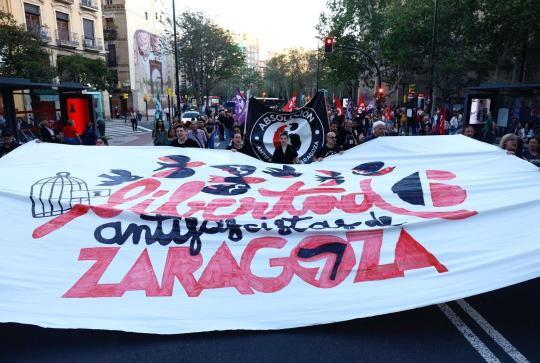

[Link to news articles in Spanish: x, x, x, x]
9 notes
·
View notes
Text







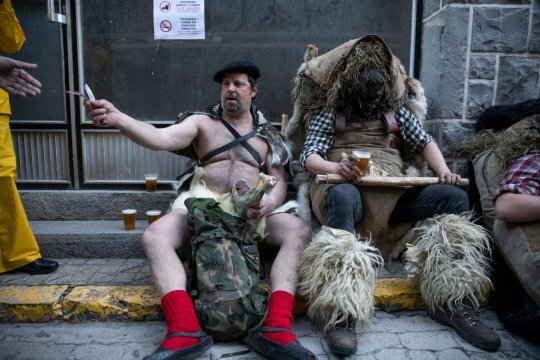
Carnaval de Bielsa, 2022.
In this village of the Pyrenees, the single men dress as trangas, half-man half-animal creatures, tying horns to their heads, painting their faces with soot and oil, wearing a hide on their backs, and long skirts. They represent virility, and they pick up the madamas, the single girls of the village who wear colorful dresses, from their houses. From there they go around the town.
Others dress up as onsos (bears), covering their backs with hay and sheepskin on his back, and like the trangas, cover their faces with soot and oil. They walk around on sticks, and represent the wilderness of the Pyrenees, especially the bears, which have been objects of mythology in the Peninsula for thousands of years. The onso is controlled by the domador. The only way he can tame him is by giving him wine or hitting him.
Other figures not pictured here are the amontato, the caballet, and the garreta.
Photos by Álvaro Calvo
61 notes
·
View notes
Text
Jaca uprising of 1930
On 12th December, 1930, there was a military uprising in Jaca, a town in the Aragonese Pyrenees, against the then monarchic government in Spain. The government, called the dictablanda ("soft dictatorship") had been preceded by the proto-fascist dictatorship of Miguel Primo de Rivera.
A few months before the uprising, in August of that same year, most political parties met in Donostia to agree on a plan to establish the Second Spanish Republic. In October, the PSOE (Socialist Party) and UGT (Socialist union) also agree to go on strike whenever the uprising would happen.
Fermín Galán, a captain who had previously been in prison for organizing an uprising against the Primo de Rivera government, led the revolutionary committee to carry out the uprising. They also contacted revolutionaries in Uesca and Zaragoza, such as Ramón Acín. After much deliberation, they agreed on the 15th December as the date. Despite this, Galán received information that the government had some type of plans. That, along with the impending snow that could close the mountain passes, which would prevent them from accessing Uesca, made Galán announce to the committee that they would do the uprising on the 12th instead.
At 5am on the 12th December, the jacetanian garrison occupied the phone and telegraphs office, post office, and train station, and proclaims the second republic in the Town Hall. The officials in other parts of the country don't make a move, wanting to see how things played out, and the columns, led by Ángel García, set to travel to Uesca are delayed until the afternoon. The next day the arrive to the outskirts of Uesca, at the Cillas sanctuary, where they clash with the government military that had come from Zaragoza. There, the uprising military is defeated.
Other towns declare a general strike and set up revolutionary committees to try to coordinate efforts, but the government military suppresses all movements.
On the 14th, Fermín Galán and Ángel García are subjected to a court martial, and are condemned to death and shot that same day. Other collaborators are sentenced to life in prison for cooperating. The Second Republic was established on 14th April of the next year, and the prisoners, among others, were pardoned and freed, while Galán and García were declared "martyrs of the Republic".
Currently, Galán and García are buried in the Uesca cemetery, and their tombs are declared of cultural interest. A few years ago, the Círculo Republicano de Huesca (Uesca Republican Group) recovered the original plaque in memory of the two captains, gifted by the Terrassa government:
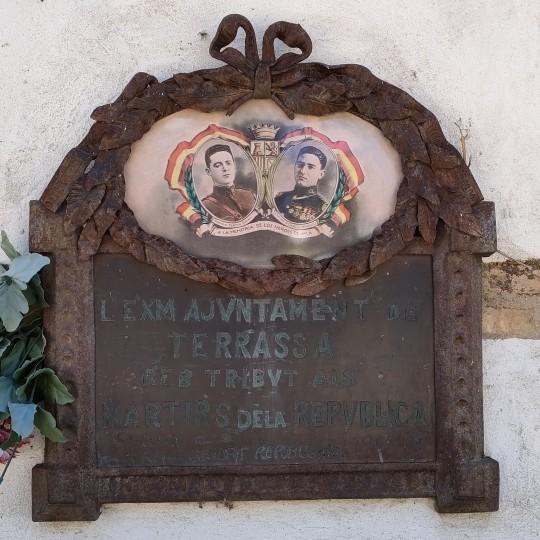
The plaque reads (translation from Catalan): The honourable Terrassa City Hall recieve tribute to the Martyrs of the Republic.
6 notes
·
View notes
Text
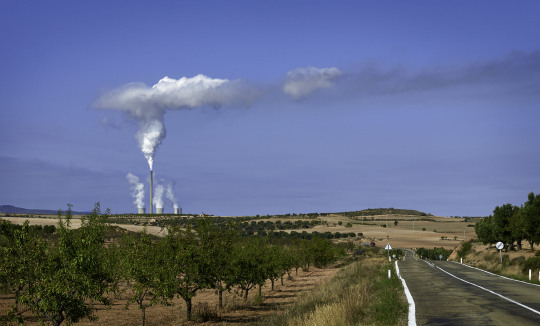
View of Andorra (Teruel) and its now destroyed power plant, which was demolished in 2022.
via Pili Garcia
1 note
·
View note
Text
Today the Aragonese-speaking world lost one of its voices, Ánchel Conte.

Ánchel was born in Alcoleya de Cinca in 1942. He was an active memeber of the PCE (Communist Party of Spain) in the last years of the dictatorship, and he was also a History teacher in L'Aínsa. It was there that he published one of his most well known poetry books, No deixez morir a mía voz. In the first edition of the book, he thoroughly insisted that Aragonese was a language that was useful for things other than speaking about cows, sheep, and sheepherders.
He was also a founder of the Consello de Fabla Aragonesa and the Aragonese magazine Andalán, where he published articles, including some in Aragonese. On top of this, these last years he was also the director of the Institute of Aragonese, where he helped approve the now official Aragonese orthography.
Thanks to him, a whole generation of Aragonese people learned to love and appreciate their language and culture, and the mark he left on the Aragonese speaking world will not go unnoticed. ¡Muitas gracias per tot, Ánchel!
"A mía voz
—en tiengo encara de voz?—
ye de tú, amigo,
no la deixes morir en yo"
11 notes
·
View notes
Note
Do you know any resources where I could learn Aragonese? My grandmother spoke it but I never learnt, and there's very little information that I can find online. I've lived my whole life in the UK and have basically no connection to that part of my heritage, and although I'm semi-fluent in castilian spanish I still feel like I'm disconnected.
Hi! I'm glad you want to learn more about Aragonese, unfortunately it's kind of hard to learn it if you don't speak Spanish, since most resources are made for Spanish speakers.
Since you mention being semi-fluent in Spanish, I can recommend the book Ejercicios de iniciación a la lengua aragonesa . As far as I know, the orthography is not up to date, but it's meant for kids so the level is decently basic, I believe. Another book that might be helpful is Pos ixo.
If you're looking for video/spoken resources, there was a TV show done in Aragonese, Charrín Charrán (ink to the Youtube channel). I've never watched a full episode but I know there are segments with grammar bits, and others where they interview all sorts of people.
There's also a folder that @minglana put together where I believe there are a lot more resources than I just listed.
Hope I could help a bit!
5 notes
·
View notes
Photo
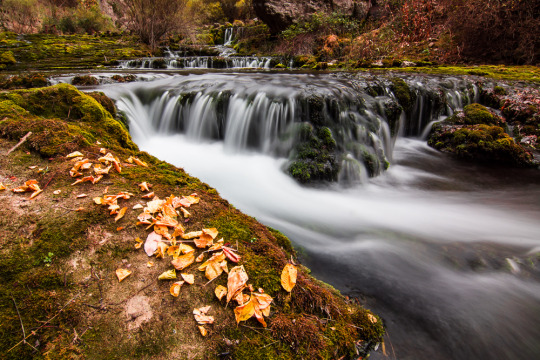
Pitarque river, in the Maestrazgo region of Teruel
by David Alonso Trs
7 notes
·
View notes
Text
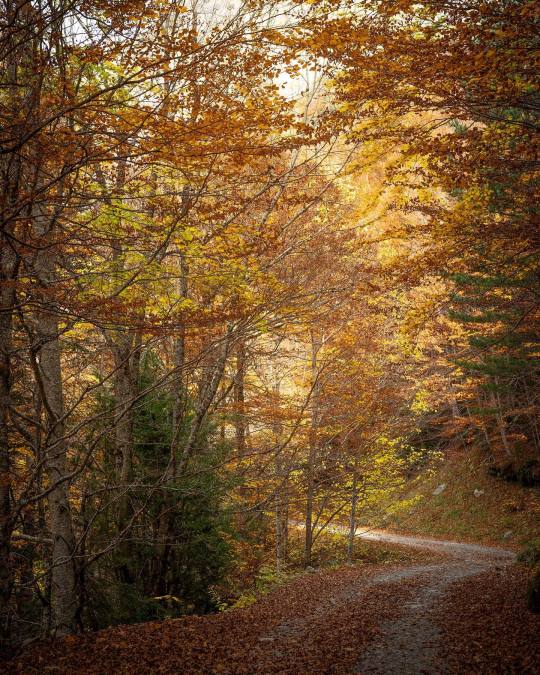
A walk through the Buixaruelo Valley in the Sobrarbe
via binman_photos on instagram
9 notes
·
View notes
Text
Nueit d'almetas
In Aragon, a holiday similar to Halloween has traditionally been celebrated. The nueit d'almetas (souls' night) is a night where according to tradition, souls roam through our world. To frighten these souls, pumpkins are emptied and decorated, and a candle is put inside to create shadows and lead the souls to their resting places in the cemetery. In different towns and villages, people also dress up as these souls to roam the streets.


Nueit d'almetas celebration in Lupiñén, via Heraldo de Aragón
Every town has a different tradition, here is what is celebrated in Ambel, Zaragoza:
youtube
9 notes
·
View notes
Text
Video posted by Casa Palestina de Aragón, from the protest that took place on 21st October in Zaragoza. Edited by Alejandro Molano

Picture by Pablo Híjar, from the protest of same day.
#palestine#palestina#free palestine#gaza#free gaza#zaragoza con palestina#zaragoza ciudad#aragon#actualidat
12 notes
·
View notes
Text
Part of the jota "El rondador" by (I think) Grupo Folklórico Alma de Aragón, while they were de ronda in the streets of downtown Zaragoza, for the annual Fiestas del Pilar (2023)
6 notes
·
View notes
Text
This is tiro de barra aragonesa, a traditional Aragonese sport, which has its origins in the men in that worked ploughing the fields coming up with an entertainment. This custom has prevailed, and it has now become this sport: the white lines mark the edges of the field, and the person stands behind the wooden bar seen in the video and throws a metal stick. The weight of the metal stick depends on the category, and contestants are allowed to carry a counterweight in their non-dominant hand. If the stick falls outside of the lines, or if it falls flat, the throw is not considered valid.
This sport has many variations all throughout the Iberian Peninsula, with the another well known variation being the barra vasca, or palanka jaurtiketa.
Video from Instagram reels by barraires_zaragoza
5 notes
·
View notes
Text


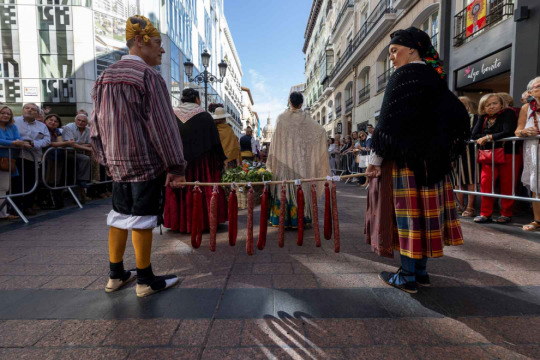







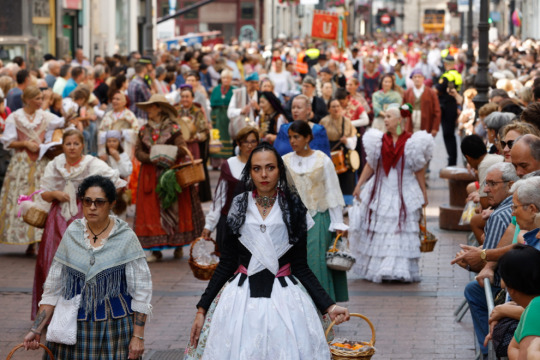

Every 13th of October, people from and with ascendance from all over Spain, but especially Aragon, go to Zaragoza to "offer" the Virgen del Pilar food. This event is known as the Ofrenda de Frutos (Fruit offering). Usually, food typical from the region is donated. The total amount of food is afterwards donated to homeless shelters in the city.
Some of the traditions and traditional dresses shown here are: Contradanza de Cetina (1), onions from Fuentes de Ebro (2), Bagpipers association (4), dance de Bujaraloz (5), women wearing panistres with mostachones, typical of Massalió (7), women dressed as flamenco dancers (8, 9).
Pictures from Heraldo de Aragón
7 notes
·
View notes
Text
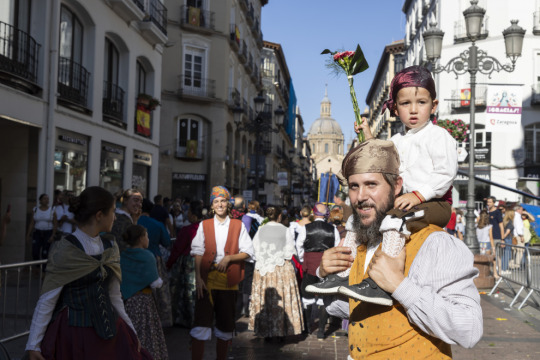
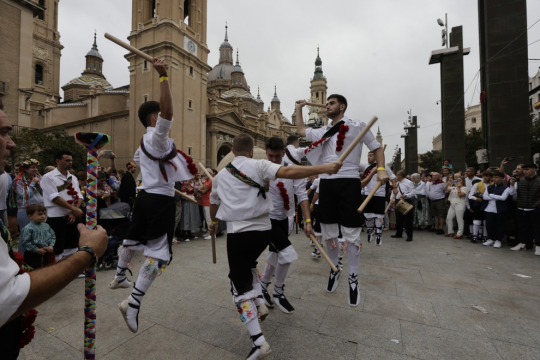
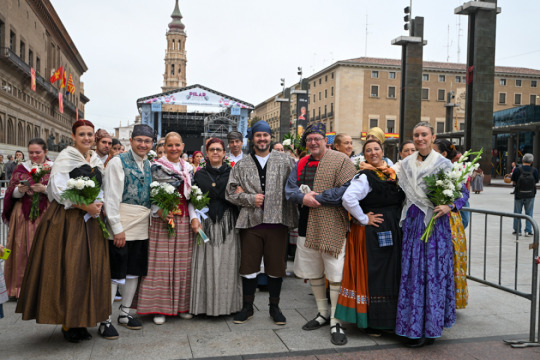



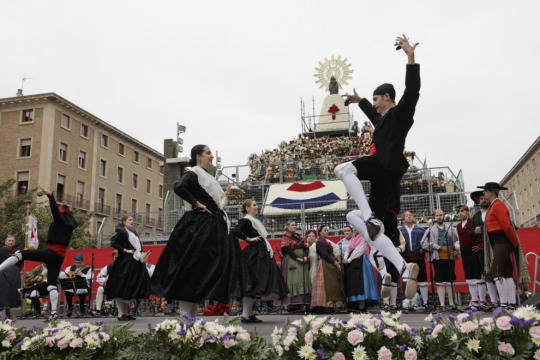

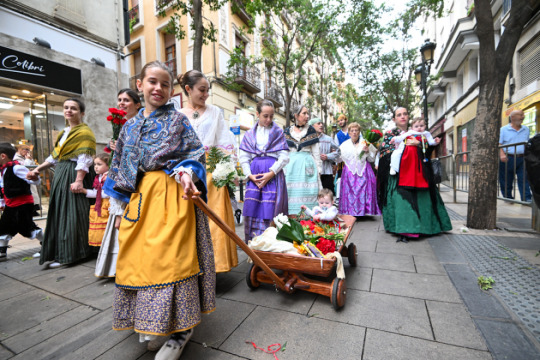


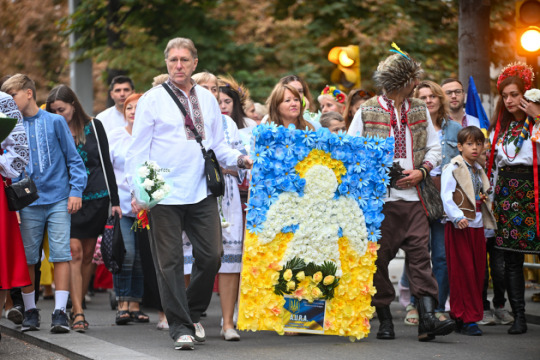
On the 12th of October, people in Zaragoza celebrate the day of one of their patron saints, the Virgen del Pilar. Since the 1950s, flower offerings have been made to the Virgin every year, with people dressing up in their culture's traditional clothes. This has its origins in Valencian immigrants living in Zaragoza doing a flower offering, as was done in Valencia starting in the 1940s. Since then, this has become one of the biggest flower offerings in the country, with over 350.000 people attending this year (2023).
Unfortunately, the popularity of this offering has to do in part with the Spanish invasion of America, with tradition stating that Columbus arrived there on the 12th October 1492. Nationwide, this has been considered as the "Día de la Raza" (Day of the Race), now called "Día de la Hispanidad" (Day of Hispanity). The Virgin is also the patron saint of the Guardia Civil (one of the police bodies in the country), and there is a military parade in Madrid with the Spanish royalty present. In Zaragoza, one of the "Hispanic countries" with immigrant representation in the city are invited to "offer" their country's flag made of flowers to be displayed on the Virgin's cape made also of flowers. This year, it was Paraguay's turn.
Photos from Heraldo de Aragón
12 notes
·
View notes
Text
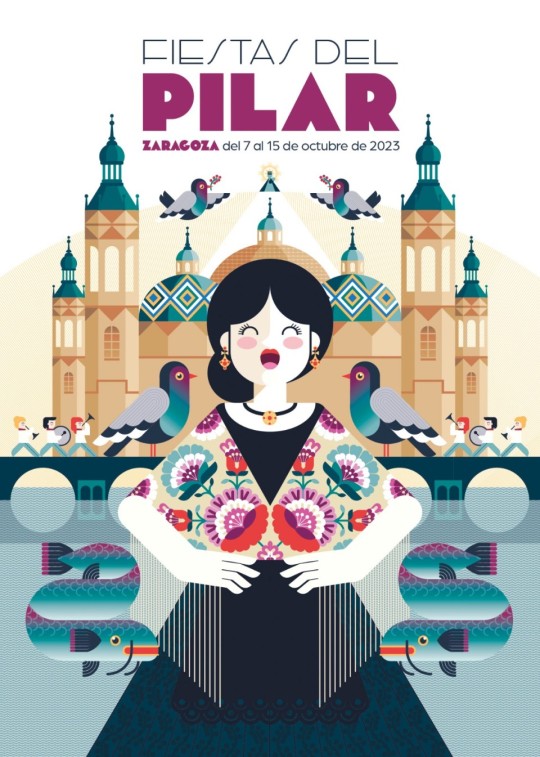
Artwork for the Fiestas del Pilar of Zaragoza, titled "Quien tira piedretas busca fiestetas", by María Iglesias.
from cartv.es
15 notes
·
View notes
Text
If you go to Zaragoza this week, you will see many people wearing red and black checkered kerchief, which in Aragon is called cachirulo.

The red and black pattern is typical of Zaragoza, and it is worn for the Fiestas del Pilar, the celebrations in honor of the Virgin of the Pillar, patron saint of the city.
The traditional way of wearing a cachirulo (not just this pattern, but any patterned cachirulo) is from Muslim origin, men fold the square into a triangle and tie it around their head like so:
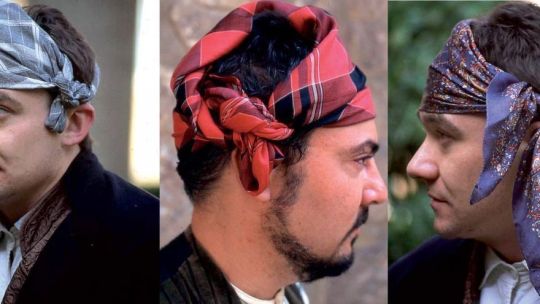
In more recent days, the red and black cachirulo is worn in a triangle, tied around the neck:
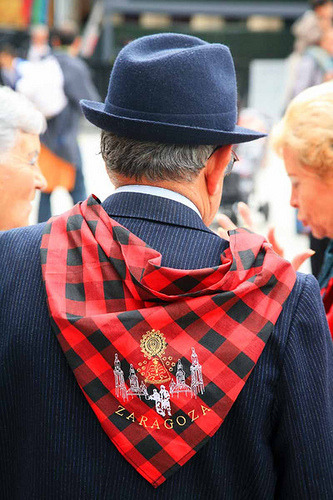
9 notes
·
View notes
Text
Four villages and towns in Zaragoza have not had drinking water in 3 weeks, due to a protozoa contaminating the water. The origin of the protozoa? An intensive livestock farm.
The town of Tarazona, and the villages of Torrellas, Los Fayos, and Novallas have been affected by a gastroenteritis outbreak due to the drinking water from the Queiles River being infected with a protozoa. In these three weeks, over 500 people have been infected, and the outbreak might reach neighboring towns in Nafarroa and Soria.
The Aragonese president, Jorge Azcón, and his government is apparently too preocupied with what is going on in Zaragoza (even before Pilares they had not shown any concern) and in Madrid to even show any concern of the situation. Hopefully now that the protozoa has been identified, a solution can be found soon.
This problem with the water is not a new problem. Ever since intensive livestock farming became the norm a few decades ago, Aragon's waters have become infested, and sometimes even undrinkable, due to the high concentration of pigs and pig farms, especially in the Ribagorza and close to Binefar, where the largest slaughterhouse in Europe is located.
15 notes
·
View notes